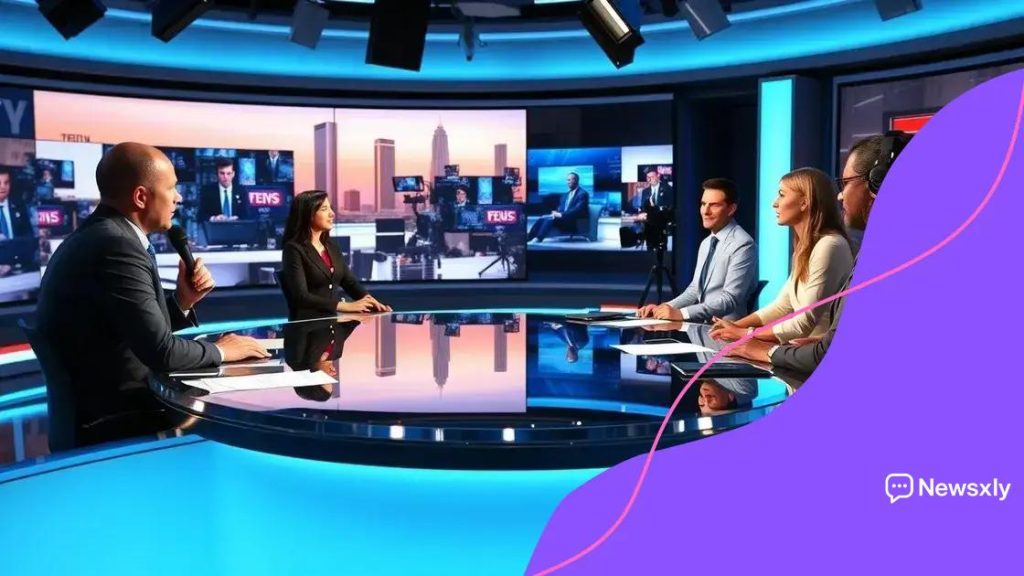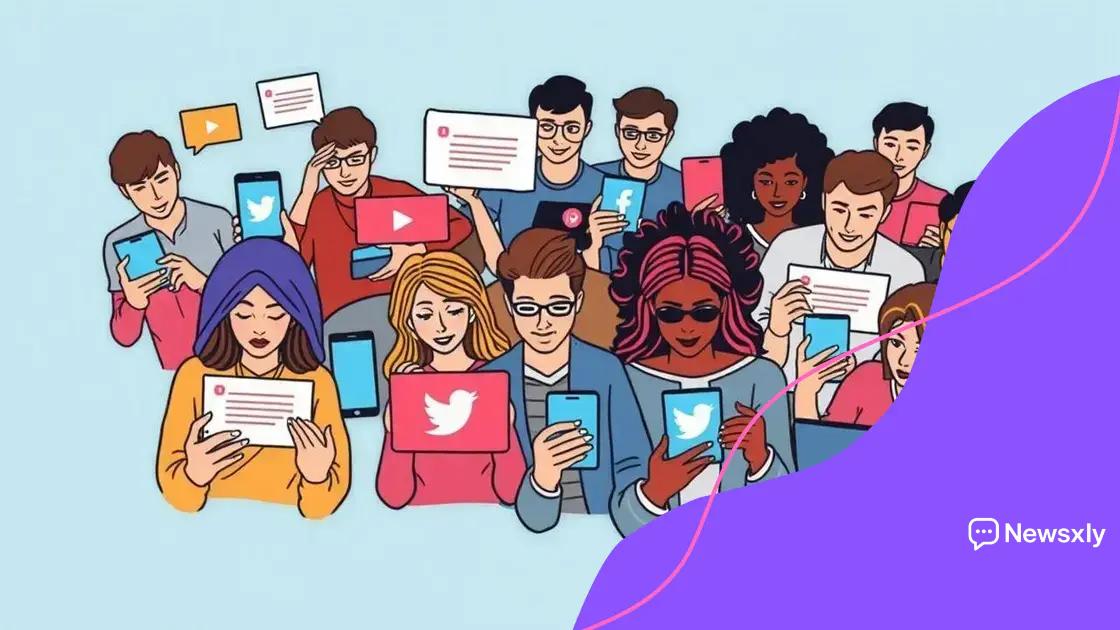The role of media in shaping public discourse today

The role of media in shaping public discourse involves influencing public opinion through agenda setting, framing stories, and combating misinformation while adhering to ethical journalism standards.
The role of media in shaping public discourse has evolved dramatically with the rise of digital platforms. As we navigate this dynamic environment, it’s fascinating to consider how information flows and what that means for us as consumers. Are you aware of how your views might be influenced?
Understanding the media landscape
Understanding the media landscape today is essential for anyone wishing to engage with the world around them. The evolution of media has transformed how we communicate and consume information. As consumers, we must be conscious of the sources we rely on for news and entertainment.
Types of Media
There are several types of media that play significant roles in shaping public opinion. Each type brings unique strengths and challenges. They include:
- Traditional Media: Newspapers, television, and radio have been the main sources of information for decades.
- Social Media: Platforms like Facebook, Twitter, and Instagram allow users to share and receive information quickly.
- Online News Outlets: Websites and blogs provide a more diverse range of viewpoints than traditional media.
- Podcasts and Webinars: These formats have gained popularity, offering in-depth discussions on various topics.
With the rise of digital platforms, the accessibility of information has dramatically increased. However, this ease of access also comes with challenges. For instance, the potential for misinformation can confuse consumers. As a result, critical thinking skills are vital in today’s media landscape.
Impact on Society
The media landscape influences cultural norms and values. It shapes how individuals see themselves and others. For instance, representation in media can significantly impact societal perceptions of different groups. When media highlights certain narratives, it can shape public discourse around issues like race, gender, and political beliefs.
Moreover, the role of media in shaping public discourse extends beyond mere information sharing. It also serves as a platform for activism and public engagement. Movements such as #BlackLivesMatter or #MeToo exemplify how social media can amplify voices that have been historically marginalized.
As we navigate through varying media outlets, understanding their role in shaping opinions and narratives is crucial. It is not just about what is presented, but how it influences thoughts, behaviors, and societal views.
Overall, grasping the complexities of the media landscape enhances our ability to engage effectively in public discussions.
How media influences public opinion
The way media influences public opinion is complex and multifaceted. Media serves as a key tool that shapes how we perceive events, people, and ideas. By selecting which stories to tell, media outlets can influence what issues are considered important by the public.
Shaping Perspectives
Media shapes perspectives by highlighting specific narratives and viewpoints. When certain issues receive more coverage, they can dominate public discourse. This can lead to:
- Agenda Setting: The media’s focus on certain topics can prioritize issues in public awareness.
- Framing: The way a story is presented can influence how audiences interpret information.
- Priming: Prepares the public to consider certain issues when evaluating policies or political figures.
- Normalizing Behaviors: Frequent portrayal of specific actions, attitudes, or lifestyles can lead to acceptance and normalization in society.
Furthermore, social media has changed how news spreads and how public opinion is formed. It allows individuals to share their thoughts and experiences, giving a platform to voices that might previously be unheard. The speed of information sharing can amplify trends, rumors, or movements in ways traditional media cannot.
The Power of Sourcing
Trust in media sources is essential. Audiences tend to rely on trusted sources for information, which can greatly impact their beliefs. A credible source can lead to greater acceptance of the information provided. Conversely, misinformation from unverified sources can create confusion and skepticism among the public.
Media literacy is increasingly vital in today’s landscape. Individuals must develop skills to analyze and critically evaluate information. By understanding how the media operates and influences public opinion, we can become more informed consumers of news.
The relationship between media and public opinion continues to evolve. As media channels diversify, so too does their impact on societal norms and values. Recognizing this influence is crucial for engaging in meaningful discussions about current events.
The impact of social media on discourse

The impact of social media on discourse has transformed how we communicate and share ideas. Platforms like Facebook, Twitter, and Instagram allow people to express their thoughts instantly, which can amplify voices that might have gone unheard in traditional media.
Enhancing Communication
Social media enhances communication by enabling real-time sharing of information. It allows users to:
- Engage in Direct Conversations: Users can interact directly with public figures, brands, and peers.
- Share Personal Stories: Individuals can share their experiences, creating connections with others facing similar issues.
- Mobilize Support: Hashtags and viral campaigns can rally support for social causes, increasing awareness.
- Challenge Conventional Narratives: Users can counter mainstream media narratives by sharing alternative viewpoints.
Additionally, the fast-paced world of social media can lead to the rapid spread of information. While this can be beneficial for real-time updates, it may also spread misinformation. Users need to navigate between facts and opinions carefully.
The Role of Algorithms
Algorithms shape our social media experiences by determining which content we see. This can create echo chambers where users are exposed primarily to views that align with their own. Consequently, this reinforces existing beliefs and can limit exposure to diverse perspectives.
It is crucial to recognize how social media can both enrich and stifle discourse. While it offers a platform for marginalized voices, it can also lead to heated debates and polarization. The nature of interactions online may affect public opinion, as discussions can become more extreme in nature.
By understanding the impact of social media on discourse, individuals can better engage in conversations and critically assess the information they encounter.
Role of journalism in shaping narratives
The role of journalism in shaping narratives is crucial in today’s media environment. Journalists serve as gatekeepers of information, deciding which stories are told and how they are presented. This responsibility directly influences public perception and understanding of events.
How Stories are Framed
Journalism shapes narratives through the framing of stories. The way a story is reported can affect how audiences perceive the subject. Some key factors include:
- Choice of Language: The words journalists use can either evoke emotion or stir up controversy.
- Source Selection: Choosing whom to quote or interview can give weight to certain perspectives over others.
- Visual Representation: Images and videos included in reports can create powerful associations in viewers’ minds.
- Story Context: Providing background information can help audience members understand the significance of an event.
Moreover, journalism connects people to the world around them. It informs the public about critical issues, from local events to global crises. By providing research, analysis, and context, journalists help shape opinions and encourage informed discussions.
Ethical Considerations
The ethics of journalism play a significant role in how narratives are developed. Journalists are expected to report truthfully and fairly. When they adhere to these principles, they foster trust with their audience and promote transparency.
However, in an age of rapid information sharing, this is often challenged. The presence of clickbait headlines and sensationalism can distort narratives. Consumers must navigate a landscape filled with contradictions and biases, making it vital for media literacy to be emphasized.
Through responsible reporting, journalism contributes to a more informed society. The narratives established by journalists can ignite conversations, change perceptions, and even inspire social movements.
Challenges faced by media today
The challenges faced by media today are numerous and complex. As technology evolves, so do the demands placed on media organizations. Journalists and news outlets must continuously adapt to maintain credibility and relevance in a rapidly changing landscape.
Misinformation and Fake News
One major challenge is the spread of misinformation and fake news. With the rise of social media, false information can circulate quickly, leading to confusion and mistrust among the public. Journalists have to:
- Verify Sources: It is crucial to ensure that information comes from reliable sources before publishing.
- Fact-Check Rigorously: Fact-checking has become a fundamental part of responsible journalism.
- Educate the Audience: Media must help the public understand how to identify misinformation.
- Build Trust: Transparency about sources and processes can foster trust with audiences.
In addition to misinformation, the fragmentation of media audiences presents significant obstacles. With so many platforms available, it can be difficult for media outlets to reach and engage their target audience.
Economic Pressures
Economic pressures also pose challenges to journalism today. Many news organizations are struggling financially, which can compromise their ability to report effectively. These pressures often lead to:
- Reduced Resources: Smaller newsrooms may not have enough staff to cover important stories thoroughly.
- Increased Reliance on Sensationalism: To attract views and clicks, some media outlets may prioritize sensational stories over important news.
- Decline in Local News: Many communities are losing local news coverage, which is vital for informed civic engagement.
The advancement of technology presents both opportunities and challenges for media. While digital platforms allow for innovative storytelling, they also create more competition and the pressure to produce content at a faster pace. This shift can sometimes compromise the quality of journalism.
As media adapts to these challenges, it must prioritize ethical standards and quality reporting. Addressing the issues of misinformation, economic strain, and evolving audience expectations is essential for the future of media.
FAQ – Frequently Asked Questions about the Role of Media in Shaping Public Discourse
What is the main challenge facing media today?
The main challenge is the spread of misinformation, which can confuse the public and undermine trust in news sources.
How does social media impact public opinion?
Social media allows for rapid sharing of information, which can amplify voices but also spread false information quickly.
Why is ethical journalism important?
Ethical journalism is crucial for maintaining trust with the audience and ensuring accurate reporting of important issues.
What role do journalists play in combating misinformation?
Journalists verify facts, educate the public on how to recognize misinformation, and strive to present accurate information to their audiences.





